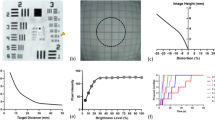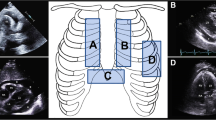Abstract
Percutaneous pericardial puncture is a relatively safe and effective technique in case of large pericardial effusions when practiced under echographic or radiological control. The goal of our project is to improve the performance of this technique, mainly in case of smaller and loculated effusions using an accurate guidance towards a preplanned target, based on a model of the pericardial effusion. This paper presents preclinical results of this new computer-assisted technique used to reach the pericardial cavity.
The procedure is divide into 3 steps: 1. acquisition of ultrasound data, using an echocardiographic device connected to a 3-D localizer and to a computer, 2. modeling procecure to define the optimal strategy taking into account the mobility of organs on a digital model, 3. guided puncture with a localized needle to reach the predefined target using a passive guidance system. After validation on a dynamic phantom and a feasibility study on dogs, an accuracy and reliability analysis protocol was realized on pigs with experimental pericardial effusion.
Feasibility of the technique is demonstrated on animal study with an accuracy of at least 2.5 mm. Further clinical investigation is in progress using a more ergonomic and less cumbersome system.
This study demonstrates the feasibility of computer-assisted pericardiocentesis. Beyond the simple improvement of the current technique, this could be a new way to reach the heart or a new tool for percutaneous access and image-guided puncture of soft tissues.
Zusammenfassung
Die perkutane Perikardpunktion ist ein relativ sicheres und wirksames Therapieverfahren bei größeren Perikardergüssen, wenn sie unter echokardiographischer oder radiologischer Kontrolle erfolgt. Das Ziel einer computergestützten Perikardpunktion ist es, die Punktionstechnik zu verbessern und insbesondere bei kleinen und gekammerten Perikardergüssen eine gezielte Punktion vornehmen zu können. Die Untersuchungen sind Modellversuche einer Perikardpunktion im Sinne präklinischer Datenerhebung.
Eine Perikardpunktion mit Computerunterstützung lässt sich in drei Schritte aufteilen: 1. echokardiographische Datenerhebung im 3-D-Format, die in einen Computer eingespeist werden, 2. Wandlung der Daten in ein digitales Modell und 3. gezielte Punktion mit einer computermäßig lokalisierbaren Nadel, um das ausgewählte Ziel (lokalisierter Perikarderguss) zu erreichen. Nach Untersuchungen an einem dynamischen Phantom sowie einer weiteren Untersuchung an Hunden wurden Genauigkeit und Verlässlichkeit des Systems an Schweinen mit einer experimentell induzierten Perikarditis geprüft.
Mit Hilfe des Systems kann die Punktion mit einer Genauigkeit von mindestens 2,5 mm erfolgen. Diesen Untersuchungen folgt gegenwärtig eine klinische Erprobungsphase an Patienten mit einem für die Klinik geeigneteren Prototypen.
Die Untersuchung zeigt, dass eine computergesteuerte Perikardpunktion durchführbar ist. Sie stellt darüber hinaus eine Perspektive für einen perkutanen Zugang zum Perikard mit gezielter Punktion dar und lässt sich auch an anderen Punktionsorten anwenden.
Similar content being viewed by others
Author information
Authors and Affiliations
Additional information
Rights and permissions
About this article
Cite this article
Chavanon, O., Carrat, L., Pasqualini, C. et al. Computer-Guided Pericardiocentesis: Experimental Results and Clinical Perspectives. Herz 25, 761–768 (2000). https://doi.org/10.1007/PL00001995
Issue Date:
DOI: https://doi.org/10.1007/PL00001995




